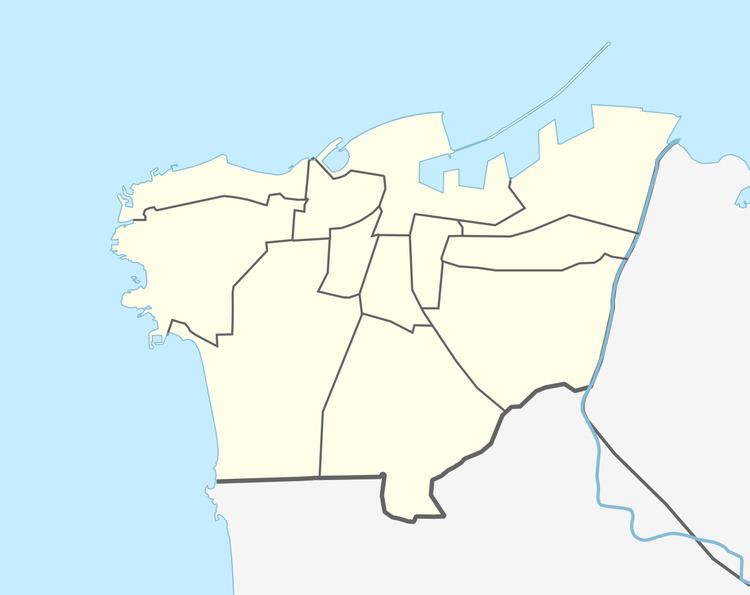Phone +961 1 632 515 | ||
 | ||
Similar | ||
Future of horse racing at beirut hippodrome in doubt
Beirut, the capital of Lebanon, is home to two hippodromes, a historic one from the Roman era and a modern one that was built in the late 19th century.
Contents
- Future of horse racing at beirut hippodrome in doubt
- Future of horse racing at beirut hippodrome in doubt ben said reports
- Roman Hippodrome of Beirut
- Preservation
- Hippodrome du parc de Beyrouth
- In literature
- References
Future of horse racing at beirut hippodrome in doubt ben said reports
Roman Hippodrome of Beirut
The Roman Hippodrome, which occupies 3500 m² near the Maghen Abraham Synagogue in Wadi Abu Jamil, the historic, Jewish quarter of Beirut, was discovered in 1988. The Roman Hippodrome of Beirut was the second to be discovered in Lebanon after the Tyre Hippodrome, making Lebanon home to two of the five known Roman hippodromes in the Levant, the other three being in Caesarea in Israel, Jerash in Jordan, and Bosra in Syria. The Roman Hippodrome of Beirut is considered to have been the grandest of the five, having amphitheaters that are several meters high and a race track, which is more than 90 meters long.
Preservation
In 2009, Culture Minister Tamam Salam, had the site listed officially in the general inventory of historic buildings, ruling that it should be preserved in situ and turned into a tourist landmark.
According to an article appearing in the French daily, L’Orient le Jour, Gaby Layoun, the Culture Minister at the time, approved in March 2012 plans for a luxury residential complex to be built over the ruins of Beirut’s Roman Hippodrome, bypassing the recommendations of three of his predecessors: Tarek Mitri, Salim Wardé, and Tammam Salam. The three previous Culture Ministers, Mitri, Wardé, and Salam criticized Layoun's move and reiterated the importance of protecting and preserving the archeological site. A march to protest the destruction of the hippodrome took place on March 24, 2012. The Association for the Protection of the Lebanese Heritage (APLH) organized the protest as an attempt to reverse the Culture Ministry's decision to allow the building over the hippodrome. Following the litigation brought by the Association for the Protection of Lebanese Heritage (APLH), the court suspended on May 31, 2012 the Culture Ministry's decision, N˚ 849, to dismantle the Roman Hippodrome that would have allowed for the construction of a building project on the site. The site is protected for now.
Hippodrome du parc de Beyrouth
The current Beirut Hippodrome, officially called Hippodrome du parc de Beyrouth, is a horse-racing facility in Beirut's Horsh district adjacent to Badaro.
During the 4th and the 5th centuries, the activities in hippodromes across the Byzantine empire were banned under the pressure of the church, the structures fell in disrepair and their stones were used for the construction of other buildings. The ancient hippodrome of Beirut thus lay forgotten until its unearthing. In 1893 the horseracing tradition was reestablished in Lebanon with the founding of the “al-Marmah” hippodrome in the town Bir Hassan. The wealthy Beirutis aspired to realize a club including a western style hippodrome and a casino similar to the ones that were being erected across the European metropolises. In 1916, the wali of Beirut Azmi Bey who supported the club project entrusted the undertaking to the Sursock family. Alfred Sursock, who financed the project, signed an agreement with the municipality of Beirut for the development of 600,000 square meters of the Beirut pine forest. The project was to include a public causeway, a cinema, a casino, and the hippodrome. The hippodrome was effectively achieved in 1921 by Amine and Bahjat Abdelnour while the casino structure became the seat of the French mandate authorities in Lebanon.
In the 1960s, the Beirut Hippodrome became one of the busiest race tracks in the world, holding races twice a week, 52 weeks a year.
The Israeli army occupied the hippodrome during the Invasion of Lebanon in 1982.The Israeli army entered the hippodrome on August 4.
In addition to national and international horse races, the hippodrome also hosts The Garden Show & Spring Festival every spring that welcomes more than 160 exhibitors and over 24,000 visitors from Lebanon, Syria, Jordan, Cyprus and other European countries. At the 2012 Garden Show & Spring Festival, the French rose producer, Meilland International, presented to the public the Beirut Rose, which was cultivated in tribute to Lebanon’s capital.
